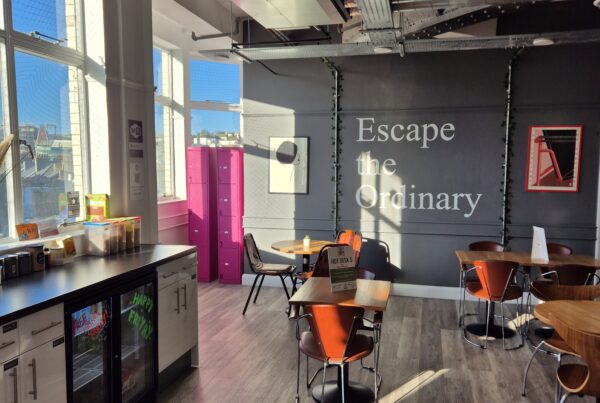Collaborative Workspace Design
To use the catchphrase of 2020, we are living in unprecedented times, that have shifted the world of work. This poses the question of how office design will change to accommodate this ever-evolving nature of work. With this comes the trends of collaborative office design, offering clever workspace solutions to the new ‘normal. Workplaces are abandoning offices and cubicles, with no clear way to define what those spaces should embody to encourage collaborative workplace design and engagement. Should you invest in a benching concept? seating everyone side by side?
What is Collaborative Workspace Design?
For many companies, the answer lies somewhere in-between, as it is important to find the right balance of collaborative workplace design for each team. Collaborative workplaces join concepts like ‘open-air design’ to the benefits of flexible workspaces, designed right, the workspace can be a great benefit. Initiating ideas and productive teamwork within the office. Modern office layouts look at the core elements defining team-focused spaces. That’s why a key element of modern workspace design is engaging furnishings and decor—especially in collaborative workspaces looking to engage people. Collaborative workspaces encourage and build face-to-face communication, you can do this with design by adopting a nontraditional, decentralized furniture layout. This can drastically change the dynamic of a room, for example, think of a conference table. Typically the team leader would sit at the head of the table, which automatically creates a hierarchy in the room. Now, make that table round. There’s less hierarchy, but still, structure. Or you could adopt a non-traditional, decentralized furniture layout. Mixed chairs with different levels of support and sofas. Scatter chairs throughout the room in no real order. Technically, a meeting room/ conference room is a collaborative space. Teams can come together to discuss a topic and voice their ideas, however, can you truly be collaborative in a room or space that feels as restrictive and formal as a conference room? Unlikely. It’s not an engaging setting and has minimal flexibility to sitting on a rectangular table. Do whatever it takes to create comfort and shed implied hierarchy. This sends a message of equality and encourages team members to confidently share ideas.
What are the benefits?
Collaborative workplaces marry the concept of an open-air design to the benefits of flexible workspaces. This gives teams a chance to move beyond desks and work together outside of a stuffy conference room. Designed right, collaborative workspaces are a benefit and can fuel some of the best ideas and most productive teamwork in the office. But this doesn’t necessarily need to be confined to co-working spaces, these approaches can be adopted into traditional or more corporate offices to boost productivity and engagement.
One of the great values of collaboration is that it encourages natural order. Collaboration emphasizes freedom of thoughts from multiple, unique perspectives—not hierarchical linear thinking. A collaborative environment needs to reflect this. One of the simplest ways to incite individual participation is to remove subconscious constructs, like standard furniture arrangements. Experiential concepts have taken over collaborative workplace design and for good reason. People tend to do their best work when it doesn’t feel like work. They’re prone to free-flowing ideas and nonconformist thinking when put in a stress-free environment. Deliver an experience and you’ll be rewarded with great ideas.
Whitewashed walls and fluorescent lighting aren’t just bad for creativity—they’re soul-sucking. A drab and uncomfortable office won’t inspire good ideas, even when multiple people collaborate on them. That’s why a key component of modern workspace design is engaging décor. Evidence-based design improvements provide employees with improved satisfaction and heightened well-being. It reduces stress, provides easier wayfinding, and increases safety. For employers, this research-based design improves occupancy and financial performance. It also increases employee efficiency and retention and reduces absences.
Will you be adopting workspace design trends?
I think we can all agree fostering collaboration should be a priority for businesses, especially whilst growing. Free-flowing ideas and teamwork require the right kinds of workspaces. Keep these trends in mind when designing your collaborative workspaces and give your team every opportunity to come together in flexible, stimulating, and accommodating environments. Provide a sanctuary from work and be amazed at how much work gets done!
Many companies such as Liquid Design, Office Sketcher, and Ikea provide free information on how to transform your office space for the better, taking the first leap into collaborative workspace design.





